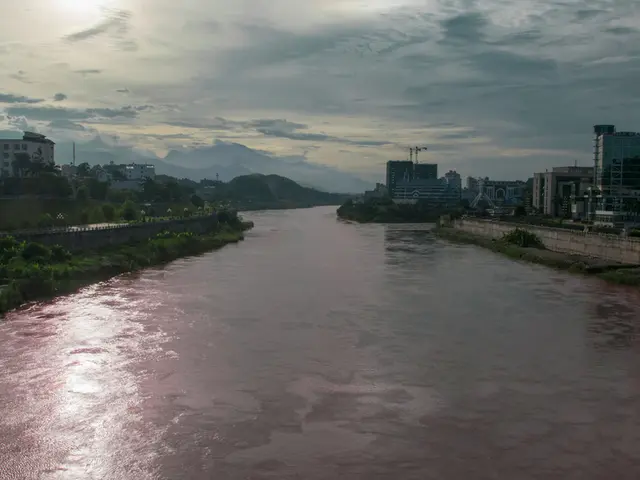Chilly Chronicles #2 - Cold Mishaps
Recurrent Snippets of Medical Aid #2 - Frost-Related Wounds
(Frostbite, frostnip, immersion foot, hypothermia)
Adventure-seekers in the wilderness are no strangers to cold-related mishaps, and those least mindful of the early signs and treatments are often the most victimized. Consider the unpredictable weather fluctuations, temperature drops, and moisture buildup that occur daily in mountain ranges.
Even day hikes commencing at lower altitudes can transform from warm and arid to near freezing rain as one ascends and storm fronts form with the rise of warm air. Backcountry skiers, geared up for a strenuous workout, can find themselves shivering in the cold if the sun sets and temperatures plummet. Proper attire, additional layers, and timely identification of cold mishaps are vital to avoiding unwanted outcomes.
One crucial aspect to grasp is that all cold-related issues can be prevented. From a frostbitten nose to a profoundly hypothermic patient, we can easily see where adequate preparation for the journey and swift recognition and reversal of the cooling process were neglected. Dressing appropriately with layers, avoiding perspiration, and taking time to dry out when needed are initial lines of defense against cold mishaps. When venturing in the mountains, always carry an inner thermal layer (such as polypropylene long underwear) and an outer waterproof shell, along with warm hats and gloves. Regularly evaluate your level of dryness and warmth, adjusting your layers as needed to prevent sweating. Be cautious of ill-fitting shoes that can restrict blood flow or trap moisture.
When examining cold mishaps, we can divide them into two broad categories: systemic or peripheral. These exist on a spectrum, and cold injuries of the extremities could indicate a increase in severity to a systemic cold mishap (hypothermia). Different from many other backcountry injuries or ailments, we can provide definitive care if detected early enough and prevent tissue damage or a trip-ending incident.
All cold-related issues share similar patterns of risk. Individuals engaging in wilderness activities, the elderly, the very young, diabetics, and those under the influence of recreational drugs or alcohol are more vulnerable. Age factors bring about physiological changes (children have less surface area, the elderly have less ability to sense cold), while the presence of other medical conditions (such as diabetes) can make someone more susceptible to the cold. Alcohol impairs circulation and impairs judgment. Furthermore, as hypothermia progresses, the mental abilities of the affected will deteriorate. The most commonly affected areas are those furthest from the body core and most likely to be damp or exposed. Look for warning signs in toes, fingertips, cheeks, the tips of ears, and the nose when obtaining a patient's medical history.
The initial cold mishap in extremities is known as frostnip, and this lays the foundation for the more well-known frostbite. When the skin turns pale but no tissue has frozen, the exposed area has frostnip. If left untreated, the tissues will freeze, with trapped moisture turning into ice crystals, increasing the potential for long-term disability. We can divide frostbite into two categories: superficial or deep. Superficial frostbite involves the freezing of the skin layer. Skin reactions can range from skin pale and numb, shedding later on, to the formation of blisters (similar to superficial burn injury patterns). Deep frostbite involves affected vessels, tendons, muscles, and bones freezing. The skin takes on a mottled, bluish appearance, with no sensation. If the patient's pinky can no longer move when touched to their thumb, assume cold-related issues may be present, and initiate rapid rewarming methods. A patient with frostbite should be considered for immediate evacuation to prevent permanent damage.
Hypothermia, or systemic cold, is characterized by three categories. Mild or early hypothermia presents a core body temperature between 89-96 degrees Fahrenheit, where the afflicted patient remains alert and actively shivers. A patient still exhibiting shivering has sugar reserves for producing heat, a good sign. Warming these patients can be done quickly through adding layers, creating a fire, consuming warm liquids, or any combination thereof.
Moderate hypothermia, with a core temperature between 89.9 degrees F and 82 degrees F, is a critical stage. Shivering has diminished significantly, is no longer effective in producing heat, and the body is shedding heat faster than it can be generated. At this point, the patient will begin to display a change in mental state (decreased responsiveness), a reduction in motor skills, and possible bluing of the lips. In this critical stage, the patient requires immediate, active rewarming techniques to prevent further heat loss and the progression to life-threatening hypothermia. Their ability to think clearly or perform self-rescue skills is impacted. Without swift interventions, the patient will continue to deteriorate into a coma.
The final stage of hypothermia is known as severe or profound hypothermia, and it resembles death. The patient's core temp is below 82 degrees F, and they are entirely unresponsive. No shivering is present, and muscles may be rigid and fixed. At this stage, a pulse may be weak and difficult to locate. Pupils are fixed. This patient requires immediate evacuation and could potentially require CPR.
In Search and Rescue, we always assume the "Three H's” with a patient: hypovolemic (volume depleted/dehydrated), hypothermic (low body temp), and hypoglycemic (low blood sugar). Recognizing this, we can see that defeating hypothermia requires a warm, sugary drink. Giving a patient a liter of warm water with a few tablespoons of honey dissolved in it is an easy way to introduce liquid volume, radiant heat, and fuel for the muscles. In more severe cases, a hypothermia wrap can be constructed with heated water bottles inside.
As a discerning outdoorsman, it is your responsibility to prepare for the elements. Preventing hypothermia is a skill that you must constantly practice whenever you are away from civilization. In extreme situations in the backcountry, even a small mistake like forgetting a base layer could result in injury or death. If you’re with a group, make sure everyone understands the signs and symptoms of hypothermia and the importance of frequent assessments to ensure no one in the party is being affected.
- Adventure-seekers in the wilderness often encounter cold-related mishaps, especially when unprepared.
- Even day hikes can turn cold and wet, leading to frostbite or hypothermia if proper precautions aren't taken.
- Dressing in layers, avoiding perspiration, and regular evaluations of warmth and dryness are essential to preventing cold mishaps.
- Proper gear, including thermal layers and waterproof shells, is crucial when venturing into the mountains.
- Ill-fitting shoes can restrict blood flow and trap moisture, increasing the risk of frostbite.
- Cold-related mishaps can be divided into systemic or peripheral, with frostbite of the extremities potentially indicating a more severe systemic condition.
- Age, diabetes, alcohol consumption, and environmental factors can increase vulnerability to cold-related mishaps.
- frostnip, the early stage of cold-related mishaps, can progress to frostbite if left untreated.
- Superficial frostbite affects only the skin, while deep frostbite can damage vessels, tendons, muscles, and bones.10.Evaluating the pinky's mobility can help detect frostbite.
- Hypothermia, or systemic cold, is characterized by three stages.
- Mild or early hypothermia, with a core body temperature between 89-96 degrees Fahrenheit, is marked by active shivering.13.Moderate hypothermia, with a core temperature between 89.9 degrees F and 82 degrees F, is a critical stage where shivering diminishes and the patient requires immediate rewarming.
- Severe or profound hypothermia, with a core temp below 82 degrees F, is life-threatening and requires immediate evacuation.
- In Search and Rescue, the "Three H's” are assumed: hypovolemic, hypothermic, and hypoglycemic.
- A warm, sugary drink can help prevent and reverse hypothermia by providing volume, radiant heat, and energy.
- In severe cases, a hypothermia wrap with heated water bottles can be used for rapid rewarming.
- Preventing hypothermia requires constant skill practice and vigilance when away from civilization.
- Group members should be aware of the signs and symptoms of hypothermia and regularly assess each other for safety.
- Hypothermia treatment involves adding layers, creating a fire, consuming warm liquids, or a combination of these.
- Climate change and environmental science play a role in increasing unpredictability in wilderness conditions.
- Management and manufacturing industries must adapt to environmentally friendly practices to mitigate the effects of climate change.
- Chronic diseases, such as cancer, respiratory conditions, digestive health issues, and neurological disorders, can impact one's ability to cope with cold conditions.
- Mental health, aging, and cardiovascular health are also important factors to consider in cold-related mishap prevention.
- Fashion and beauty, health and wellness, fitness and exercise, and lifestyle choices can impact one's susceptibility to cold and overall health.
- Autoimmune disorders can weaken the body's defenses against cold conditions.
- Science, finance, energy, and technology play significant roles in understanding the causes and effects of climate change.
- Skin conditions, Eye health, hearing, and space and astronomy are not directly related to cold-related mishaps but are important aspects of health and wellness.
- Retail, transportation, cybersecurity, and pop culture are industries that can impact the choices and behaviors of individuals venturing into the wilderness.
- Banking and insurance, personal finance, and wealth management can help individuals prepare financially for wilderness adventures and emergencies.
- Gadgets, data and cloud computing, technology, artificial intelligence, relationships, pets, travel, cars, books, shopping, social media, movies, entertainment, celebrities, music, politics, sci-fi, and fantasy are all part of the broader cultural landscape that can influence outdoor activities, preparedness, and risk perception.







